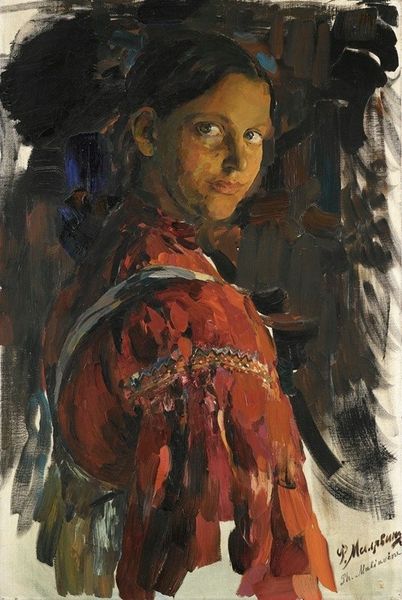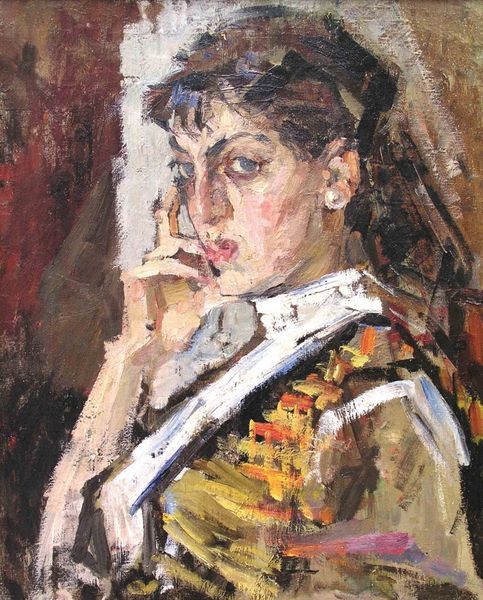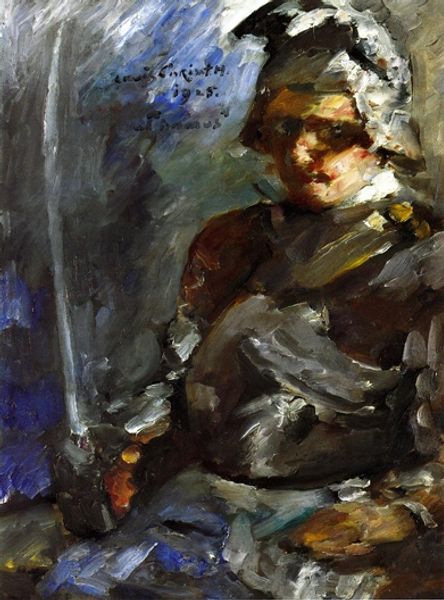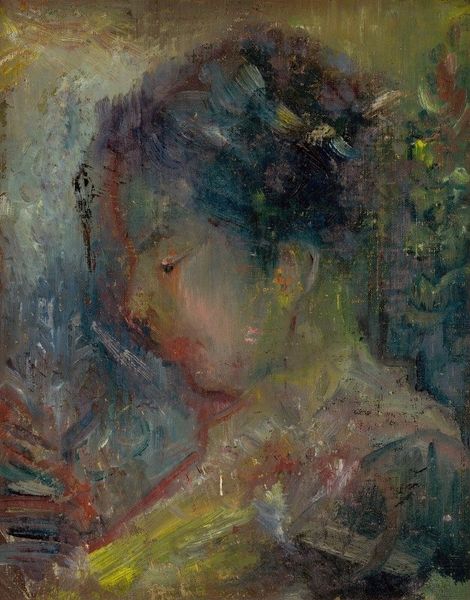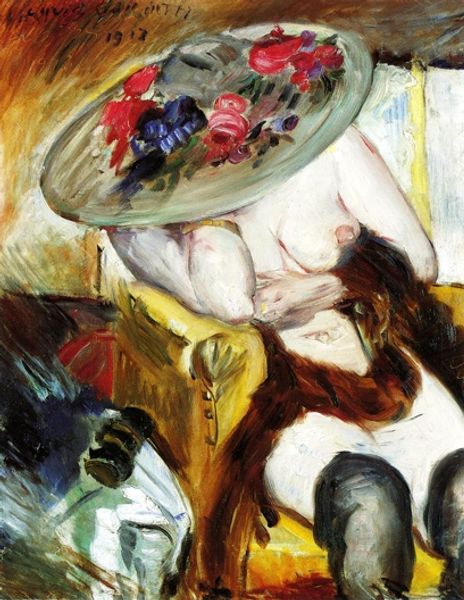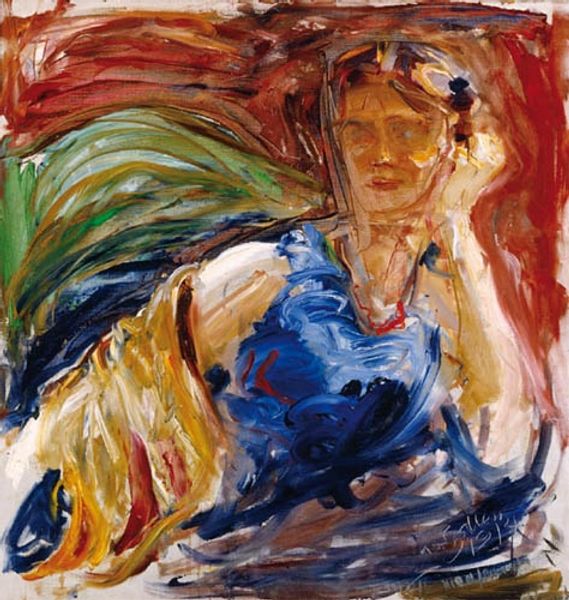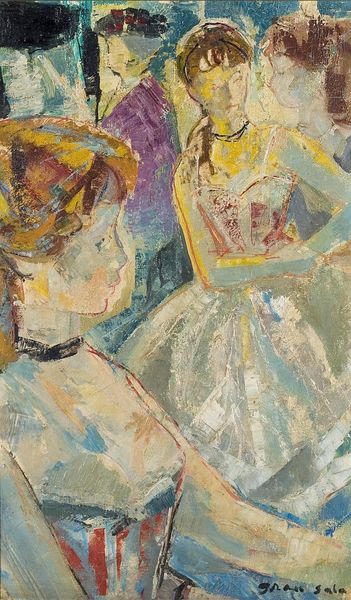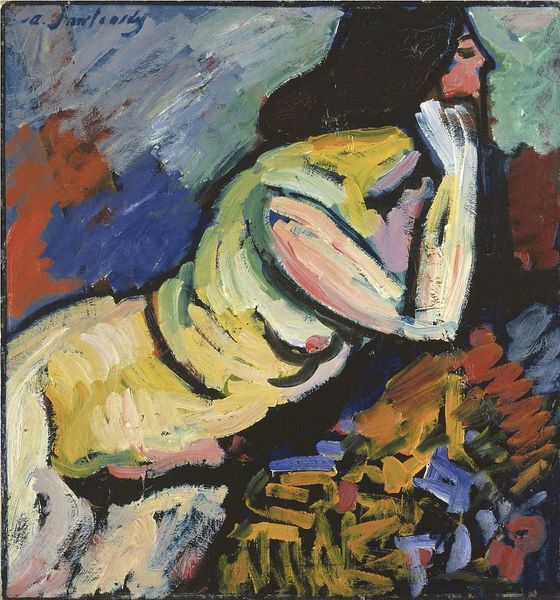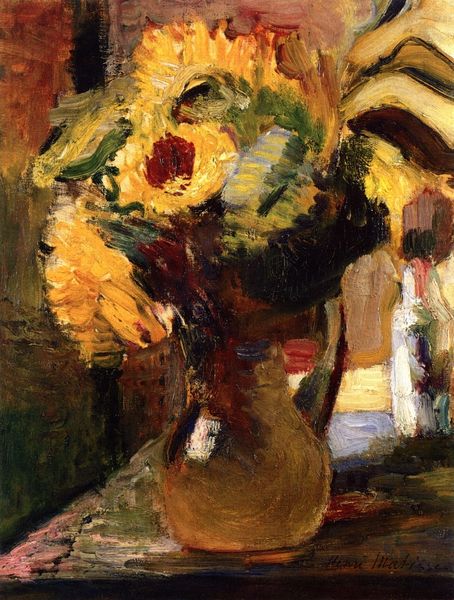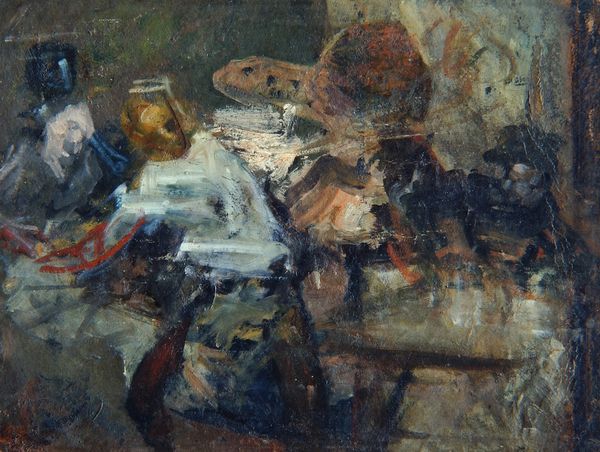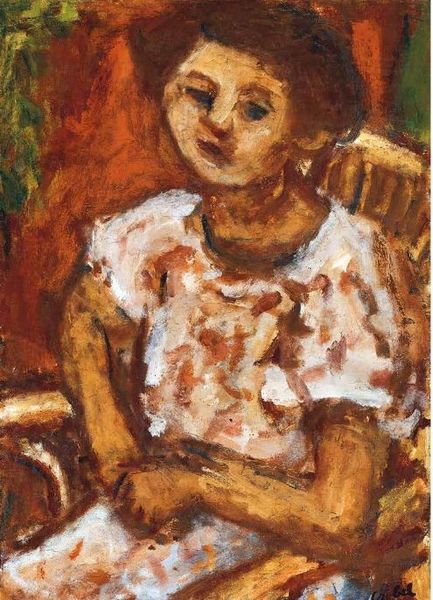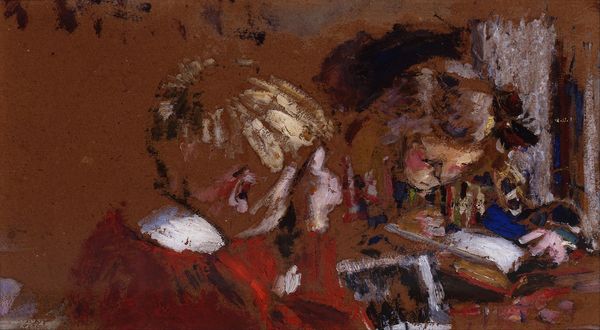
painting, oil-paint, impasto
#
portrait
#
painting
#
oil-paint
#
landscape
#
figuration
#
impasto
#
expressionism
#
expressionist
Copyright: Public domain
Editor: This is Lovis Corinth’s "Flora," painted in 1923, using oil paint, and it has an interesting impasto effect. The rough, almost frenzied application of paint suggests a raw, visceral energy. I’m curious about how this artwork operates within its historical and material context. What's your perspective on it? Curator: Note the thick application of oil paint and how that transforms a common subject—a woman with flowers—into a powerful statement on the physicality of the artistic process. Instead of seeking merely representation, Corinth seems interested in demonstrating the sheer labor and materiality involved in painting. Editor: I see that. So you are pointing out that this work highlights the process of art production. How does it challenge traditional distinctions between high art and craft? Curator: Exactly. Expressionist pieces like this blur boundaries because they force the viewer to confront the tangible reality of artistic labor, a stark contrast to the often-romanticized view of artistic creation. Corinth highlights the “craft” aspect: the physical manipulation of paint and brush. Consider also the availability and sourcing of materials; the paint itself becomes a signifier of the time and the available resources. Editor: So, is Corinth making a statement about consumerism, given the availability of the materials? Curator: In a way, yes. It prompts us to think about the economy that sustains the production of art, from pigments to brushes. Do you notice any element that might suggest the contrary? Editor: I never considered art through an economic lens. I do see that the materiality provides a directness and authenticity. It avoids high-art pretension, which humanizes the painting in a new way. I now appreciate the way the paint embodies the artist’s physical labor. Curator: Absolutely! And this reframing shifts the focus away from idealized aesthetics towards the tangible, material conditions of art-making and how consumption plays into it all. This emphasis creates an open dialogue for today's artists to investigate labor, history, and artistic processes.
Comments
No comments
Be the first to comment and join the conversation on the ultimate creative platform.
